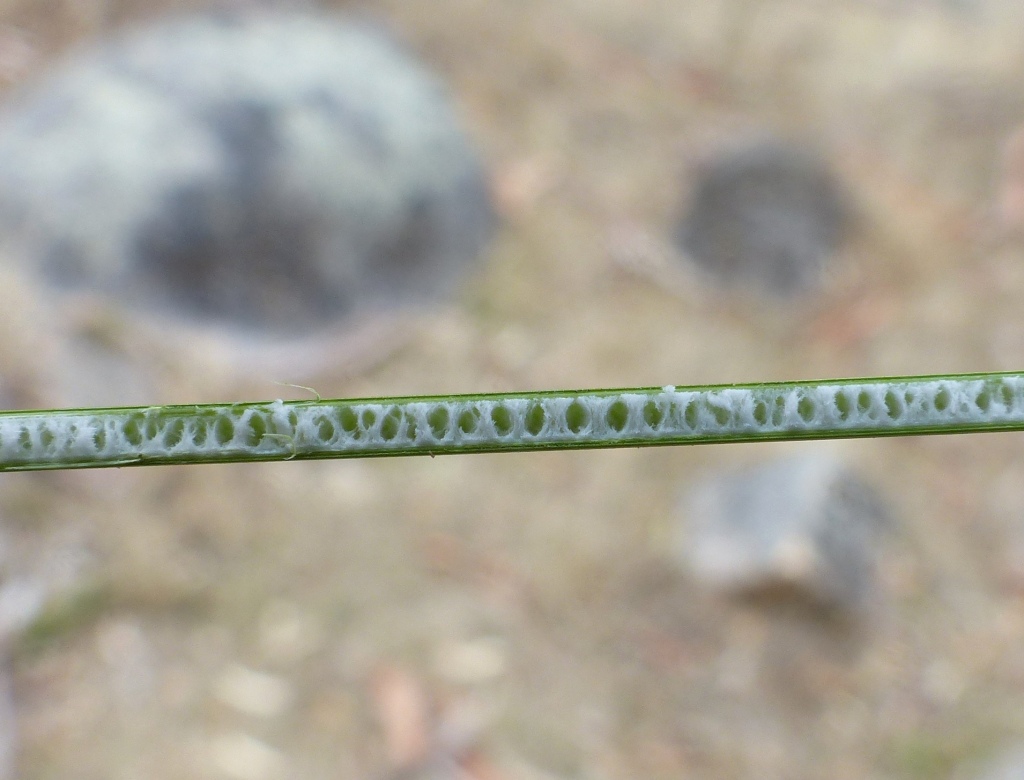Juncus usitatus
L.A.S.Johnson Common RushDensely tufted perennial with horizontal or ascending rhizomes. Cataphylls tight or loose, medium to dark brown or occasionally reddish-brown towards the base, to c. 18 cm long. Culms erect, green or yellowish-green, 35–120 cm high and 1.0–2.0 mm diam.; striations 25–40(–45), moderately strongly raised and fairly crowded; pith interrupted, air spaces variable in size, often ± equal to the pith; stomates superficial. Inflorescence open to rather dense, flowers scattered along few to many branchlets; primary bract continuous with culm, to c. 25 cm long; prophylls present. Tepals with a green or faintly reddish-tinged midrib, membranous margins of inner tepals rather broad, acute but not acuminate, 1.3–2.0 mm long; stamens 3, anthers 0.3–0.5(–0.7)mm long. Capsules stramineous or with a darker golden-brown or reddish-brown apex, exceeding the tepals, 1.5–2.0 mm long. Flowers mostly Nov.–Feb., seeds shed mostly Jan.–Mar.
VVP, VRiv, MSB, RobP, MuF, GipP, OtP, Gold, CVU, NIS, EGL, EGU, HSF, HNF, OtR, MonT, VAlp. Also WA (naturalised), SA (naturalised), Qld, NSW, ACT. New Zealand, New Caledonia. A relatively infrequently collected species that occurs most commonly in riparian habitats.
A robust form with cataphylls to 28 cm long and anthers to 0.9 mm long was collected 'from swamps on the Snowy River' in 1855 but has not been collected since. Often confused with Juncus amabilis, J. aridicola and J. sarophorus, less frequently with J. pauciflorus and J. continuus. The key characters should serve to distinguish it from J. amabilis, and for differentiating features from J. aridicola see notes under that species. J. usitatus differs from J. sarophorus in having more crowded culm striations, superficial stomates, and smaller, acute (rather than acuminate) tepals that are clearly shorter than the capsules. Hybrids with J. amabilis are known.
Albrecht, D.E. (1994). Juncus. In: Walsh, N.G.; Entwisle, T.J., Flora of Victoria Vol. 2, Ferns and Allied Plants, Conifers and Monocotyledons, pp. 197–233. Inkata Press, Melbourne.
 Spinning
Spinning



